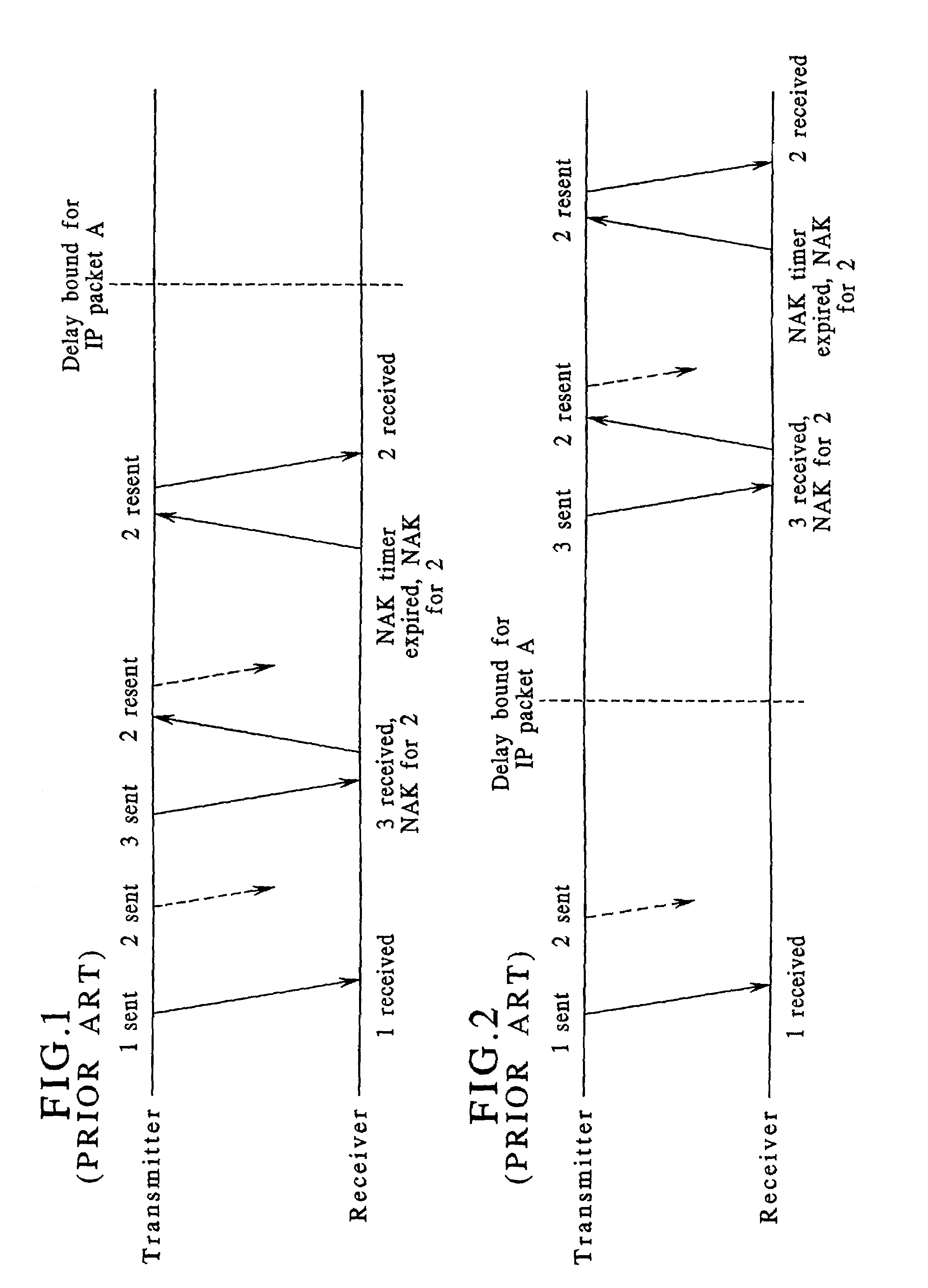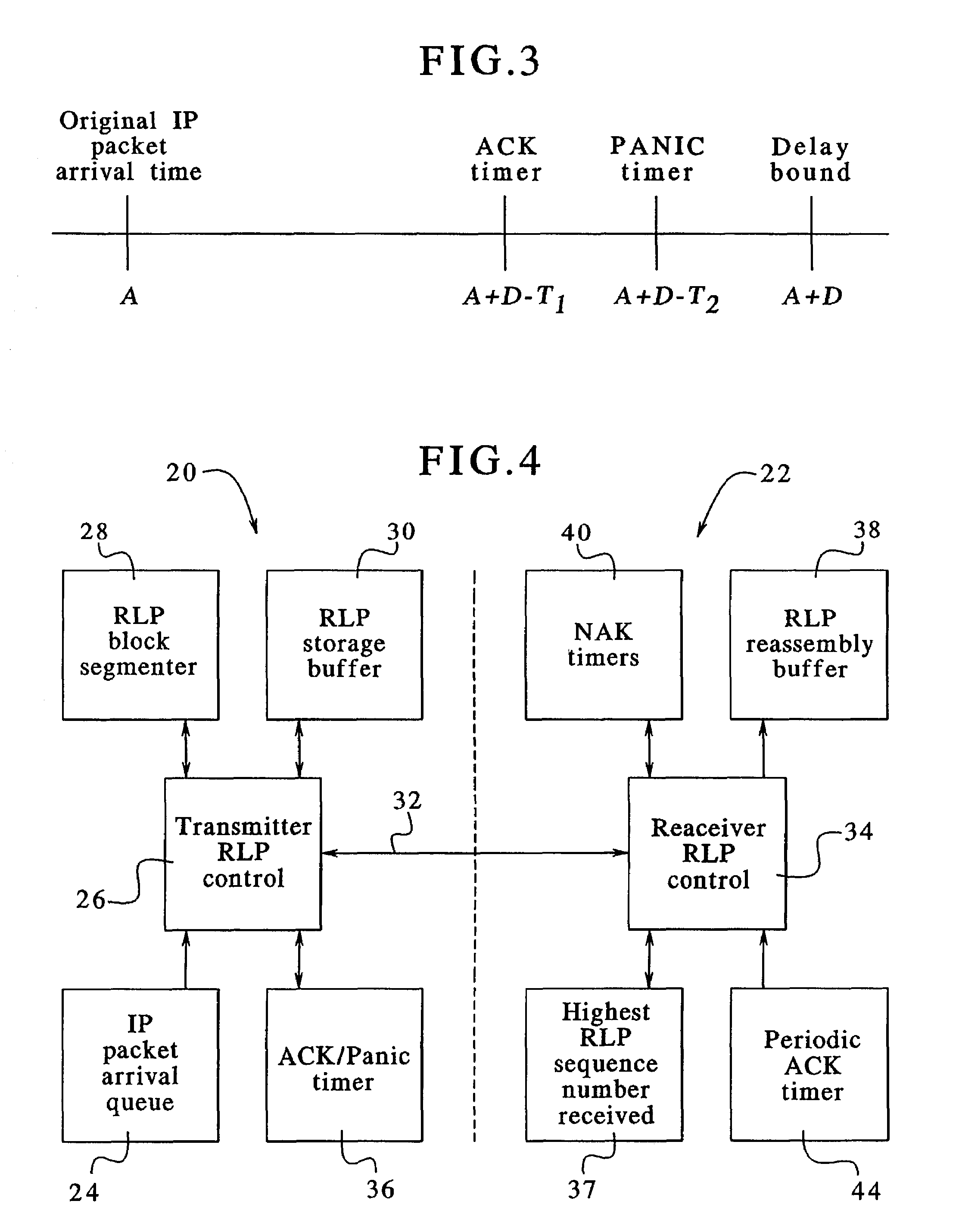Method and apparatus for transmitting data over a network within a specified time limit
a data transmission and time limit technology, applied in the field of data transmission, can solve the problem that the receiver did not successfully receive the associated data block, and achieve the effect of preventing data packet loss, preserving data integrity, and improving communication over a network
- Summary
- Abstract
- Description
- Claims
- Application Information
AI Technical Summary
Benefits of technology
Problems solved by technology
Method used
Image
Examples
Embodiment Construction
[0027]A conventional technique used in wireless or radio communications systems to request retransmission of corrupted or missing RLP (Radio Link Protocol) data block is for a receiver to send an NAK (Negative AcKnowledgement) message to a transmitter. For example, since RLP data blocks are sequentially identified with sequence numbers, assume that the receiver receives two successive RLP blocks, M and N. Normally, N should be equal to M+1 or, in other words, M=N−1, with the increment by 1 of the sequence number indicating that the received RLP blocks are properly adjacent. Now assume that N>M+1. Since the receiver expects the sequence numbers to increment by 1, it is inferred that RLP blocks M+1, . . . ,N−1 have been lost and need to be retransmitted. Under this circumstance, the receiver sends to the transmitter an NAK for each missing block, to request the transmitter to retransmit the missing data.
[0028]A problem exists when one or more RLP blocks are lost and the time gap betwe...
PUM
 Login to View More
Login to View More Abstract
Description
Claims
Application Information
 Login to View More
Login to View More - R&D
- Intellectual Property
- Life Sciences
- Materials
- Tech Scout
- Unparalleled Data Quality
- Higher Quality Content
- 60% Fewer Hallucinations
Browse by: Latest US Patents, China's latest patents, Technical Efficacy Thesaurus, Application Domain, Technology Topic, Popular Technical Reports.
© 2025 PatSnap. All rights reserved.Legal|Privacy policy|Modern Slavery Act Transparency Statement|Sitemap|About US| Contact US: help@patsnap.com



